
Myopia or near sightedness causes blurred vision. It is important to diagnose and treat it at the right time as it can affect the quality of life of the child and hinder the overall development.
According to a recent Indian study, 17% children or 1 out of 6 children aged between 5-15 years suffer from myopia and this is expected to rise to an alarming 50% in 2050. This means half the children across the country and the world at large will become myopic.
With digital or e-learning approaches replacing face-to-face classroom-based learning and with lesser outdoor activities, there is a real concern of sudden escalation in myopia.
At the Pediatric eye clinic in Narayana Nethralaya, about 65 % of the children visiting our clinic in 2019 had myopia. The year 2020 continued to witness an upward trend in the incidence of myopia. Refractive errors like myopia are one of the leading causes of avoidable blindness in the world.
The Myopia control clinic is equipped with facilities for screening, diagnosing and controlling myopia progression in a holistic and customised manner. We also intend to identify children at risk of developing myopia in future with the use of latest technology & recent advances in myopia management.
The clinic is managed by experienced doctors, optometrists, clinical faculty and equipped with the latest technology. Every child who visits the clinic will undergo a comprehensive eye evaluation and will be offered the best treatment along with newer research-based treatment options for slowing down myopia progression in children.
A tailored treatment, built on the assessment of risk factors and certain intricate features of the child’s eyes will be provided.
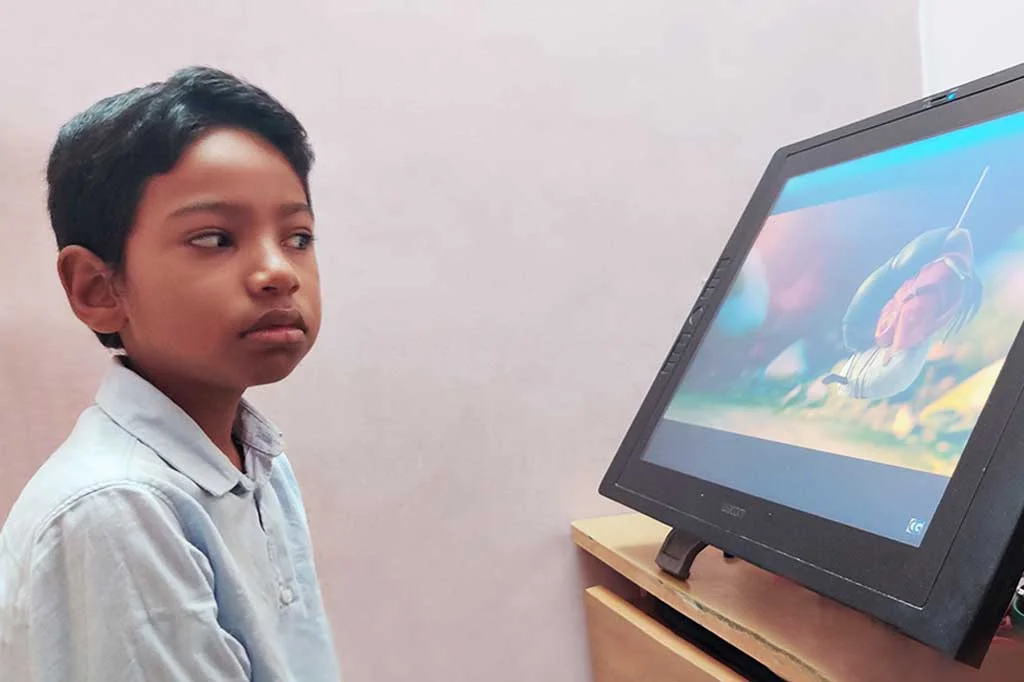
Myopia is a condition that causes distance vision to be blurred.
This occurs when the eyeball is longer than a normal eye resulting in a mismatch between the length of the eye and its focusing power, making distant objects appear blur
Myopia usually first affects school going children. It is found to rapidly increase from the age of 5 to 15 years and often becomes stable around the age of 18- 20 years.

There are various treatment options for myopia. Myopia can simply be treated with spectacles in children. However, in older children contact lenses can also be used to correct myopia.
Also, lifestyle modifications like maintaining visual hygiene and few hours of outdoor activity in daylight is advisable.

It is a device which measures all the important and intrinsic features of the eye like the length and curvature of the eye and the refractive error. The device has an in-built normative database which compares it with that acquired from your child’s eye and gives a rough prediction of how the myopia may progress in future.
Older children usually complain of the inability to see distant objects and difficulty in recognizing letters on signboards at a distance or copying notes from the board in classroom. They can also complain of headaches, eye strain or fatigue.
Detection of myopia can be challenging in Toddlers and pre-school children
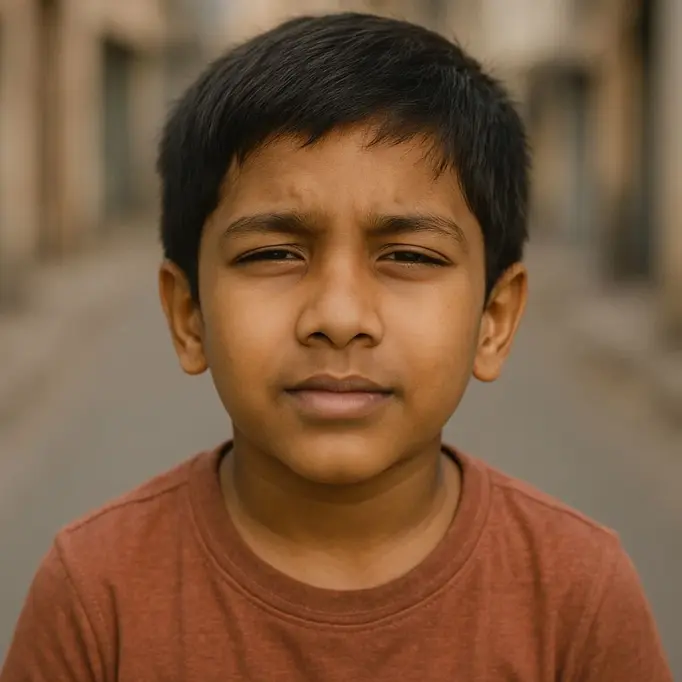

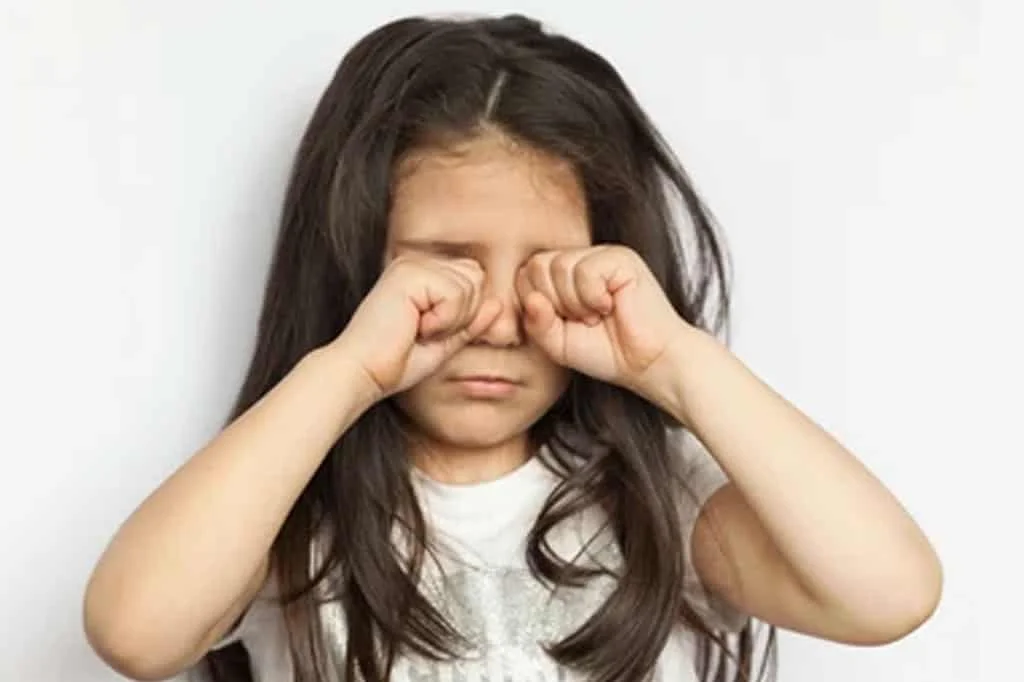
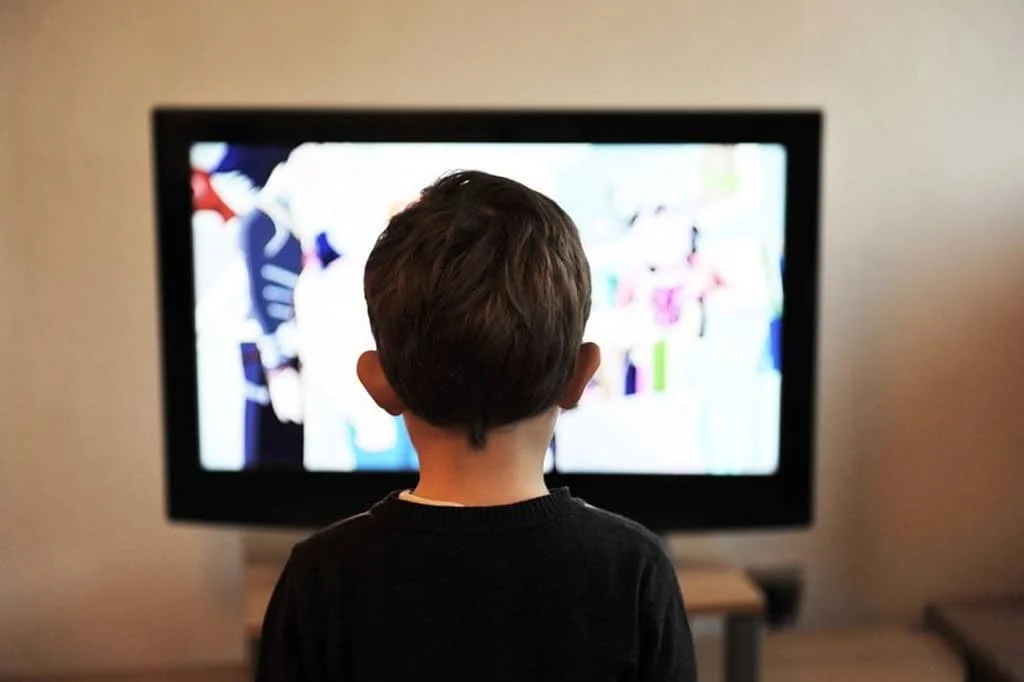
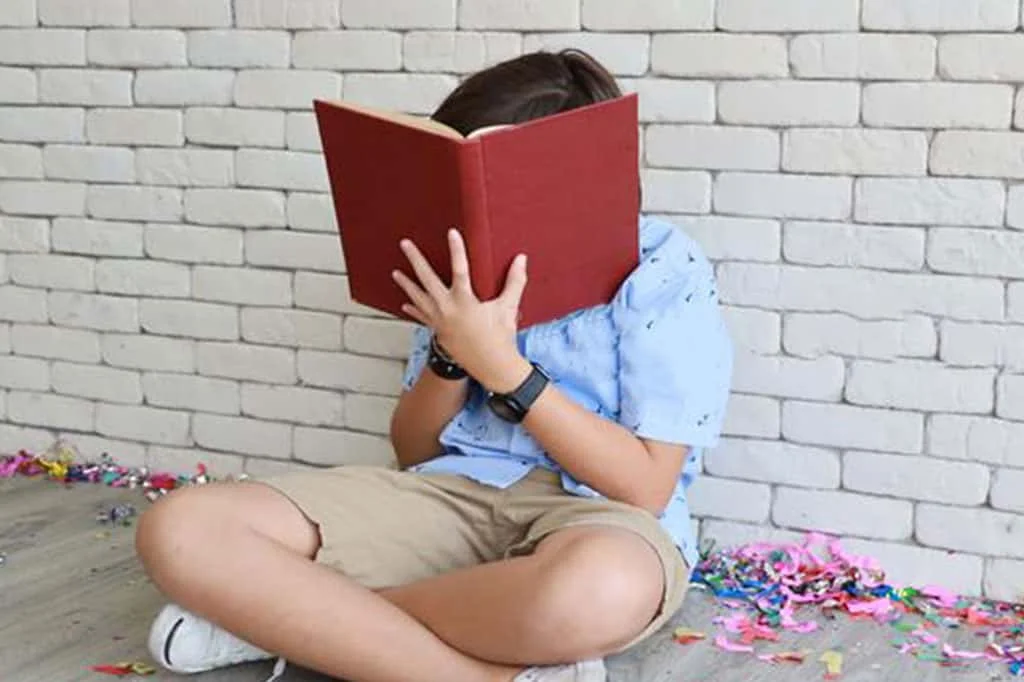
Diseases affecting the optic nerve like optic neuritis, ischemic optic neuropathy, autoimmune optic neuropathy, compressive optic neuropathy, nutritional optic neuropathy, toxic optic neuropathy.
characterized by partial of complete inability to move either one or both the eyes due to central and peripheral nervous system diseases like myasthenia gravis and ocular motor cranial nerve palsies following trauma (injury), tumours, ischemia due to systemic diseases like hypertension or diabetes mellitus.
affecting the visual pathway formed by the optic nerve, optic chiasma, optic tract and optic radiations.
like pituitary adenoma, craniopharyngioma, meningioma causing compressive optic neuropathy which cause a direct pressure on the optic nerve and other tumours of the brain affecting the visual pathway and cause of raised intracranial pressure.
such as idiopathic intracranial hypertension, and cerebral venous thrombosis, which can result in permanent and profound loss of vision in the long term
with visual loss, transient ischemic attacks with transient visual loss
All children consulting our clinic will be screened for myopia and those who are already diagnosed with myopia will undergo a detailed evaluation (including specialised tests) periodically. The entire process can take approximately 2-3 hours. During the consultation, our doctors will assess the eyes of your child and the specialized test reports to determine the best treatment option for your child.
Once the child has been assessed and a treatment plan is rendered, a periodic assessment of vision and tracking of your child’s habits is only a touch away.
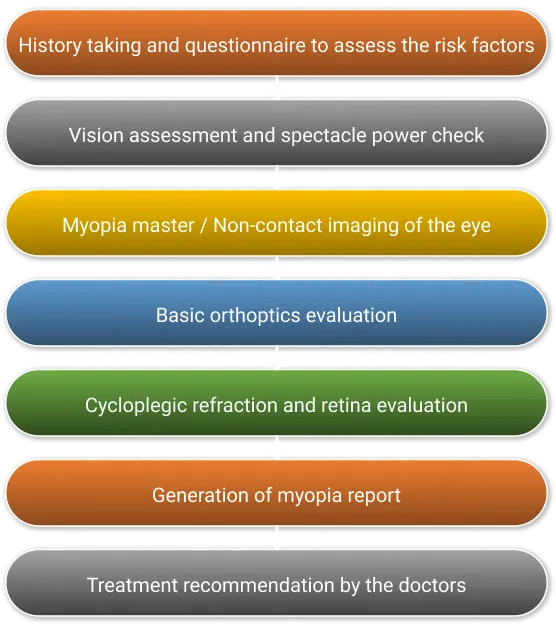
Older children usually complain of the inability to see distant objects and difficulty in recognizing letters on signboards at a distance or copying notes from the board in classroom. They can also complain of headaches, eye strain or fatigue.
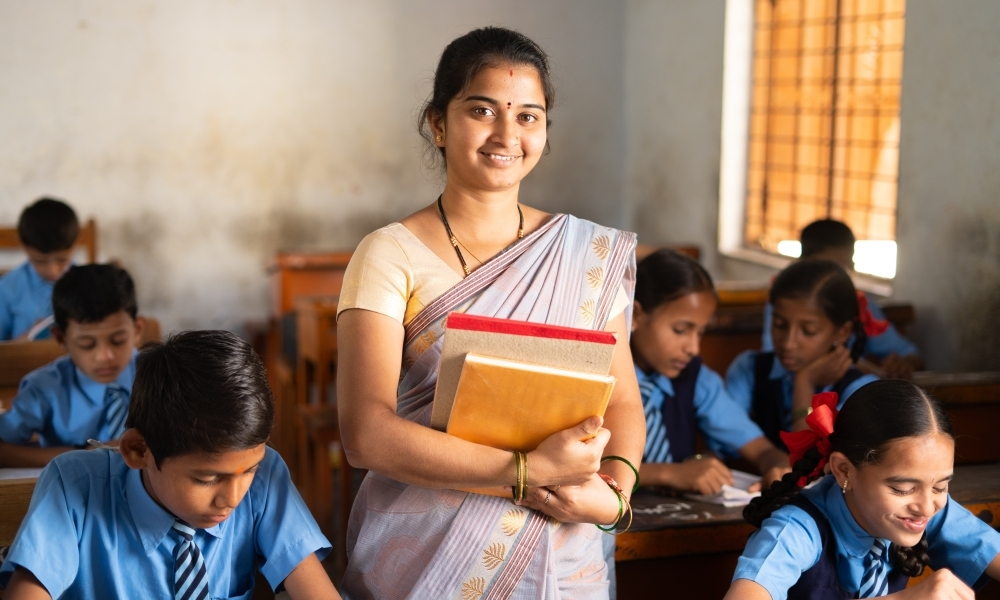
Teachers play a crucial role in children’s lives and their overall development. As a teacher, you may be the first one to notice the following subtle signs of an eye problem:
The child struggles to copy notes from the board and ends up making a lot of mistakes
The child may squeeze his/her eyelids to see better
Young ones may simply not take interest in playing outdoors
These are the hints that can catch your eye as a teacher.
Older children may simply approach you first with these problems.
Narayana Nethralaya is embarking on a myopia control campaign along with teachers, with the aim of preventing and controlling the progression of myopia.
Join us in this campaign.
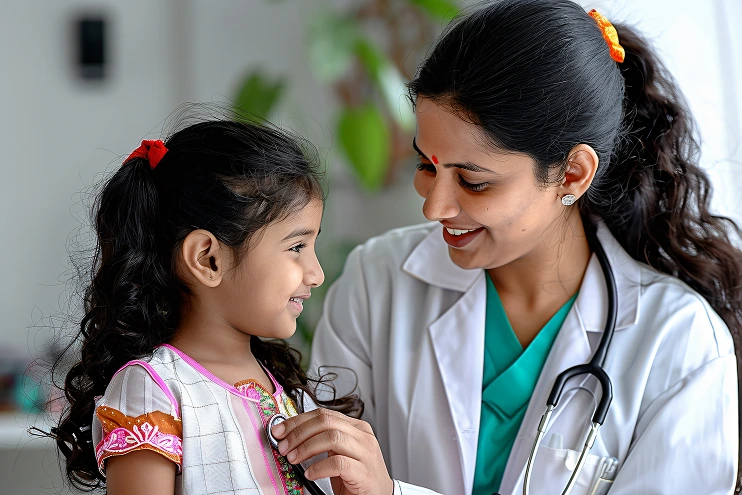
A pediatrician gains the trust of a child and the parents, becoming the first one to be approached for any problem that a child may have. Here is how we can together make a difference to the child’s ocular health.
A simple Snellens chart in your clinic may serve as a screening tool
A timely referral for routine eye screening at the age of 1, 3 and 5 years can help pick important eye diseases
Children may develop myopia even at a tender age of 4 or 5 years especially if parents are myopic
GET IN TOUCH WITH OUR PEDIATRIC OPHTHALMOLOGISTS TO KNOW MORE
Uncorrected myopia can affect the quality of life of the child. It can result in eye strain and headache because of the constant need to focus on objects and maintain the focus.
Younger the age at which a child becomes myopic, the faster it tends to progress, leading to higher levels of myopia eventually.
As myopia progresses, there is excessive growth of the eyeball which can cause various complications like development of weak areas in the retina (myopic retinal degenerations), cataract and glaucoma, which if left untreated can result in loss of vision.
Therefore, myopia management strategy needs to be started as early as possible.
Identifying children with myopic tendency and early detection of myopia by means of frequent eye check-ups is mandatory.
Once myopia is detected, timely intervention is a must as uncorrected myopia by itself can sometimes cause progression.
There are various measures to control myopia progression. Specialized spectacle lenses, low-dose atropine eye drops and orthokeratology where in contact lenses are to be worn at night and removed in the morning are some of the measures.
It must be kept in mind these measures are implemented in addition to the use of spectacles or contact lenses.
In addition, lifestyle modifications like maintaining visual hygiene and outdoor activities in daylight is highly recommended.
Myopia, also known as short sightedness or near sightedness, is a condition where distant objects appear blurred while near vision remains clear
It occurs when the eyeball is longer than the normal length or when the cornea (black portion of the eye) is too curved. This makes the rays of light to focus in front of the retina instead of focusing on it resulting in a blurred image.
Myopia tends to get worse each year as the eyes grow longer
Several factors can decide who gets myopia and how he/she worsens every year. Both genetic/ hereditary factors & Lifestyle related factors influence myopia. It is said to be caused due to a complex interaction between these factors.
A child is at a higher risk of developing myopia if the parents or siblings are myopic too (i.e., genetic factor).
The lifestyle and habits of a child can worsen myopia. Limited outdoor time, limited exposure to daylight, holding books close to face, reading in dim light and long hours of near activity like watching videos or gaming can be responsible for the onset and worsening of myopia.
Uncorrected myopia can affect the quality of life of a child. It can result in eye strain and headache because of the constant need to focus on objects and maintain the focus.
Low myopia
Young children may simply not take interest in outdoor activities and it may also affect how a child performs at school.
Myopia within certain limits may not cause any serious damage to the eye
However, as myopia worsens, serious complications may develop including development of weak areas in the retina (myopic retinal degenerations, retinal detachments), cataract and glaucoma, which if left untreated can result in permanent loss of vision
Just the way a balloon gets thinner as it is blown bigger and stretches, a myopic eye may develop weak areas in retina as the layers of the eye stretch.
There are various treatment options for myopia.
For a long time, myopia has been corrected with use of glasses or contact lens which enables a child to see clearly.
Recently, specialized glasses and contact lenses which can control the worsening of myopia in addition to providing clear vision have been developed.
Yes. This is possible after the child turns 18-20 years of age through laser refractive correction procedures provided the child’s eye is found suitable for the procedure.
Bad lifestyle and unhealthy reading habits can worsen myopia.
Likewise healthy lifestyle and good reading habits can help in slowing down the progression of myopia
Outdoor activities in daylight for 2 or more hours per day, holding books at least 16 inches away from the eyes, taking intermittent breaks while reading, studying in a well-lit room, and minimizing the use of digital devices are some of the ways one can prevent or keep a check on worsening of myopia
There are various scientifically proven ways of slowing down myopia
The optical measures include use of specialized spectacle lenses or contact lenses.
Teaching good visual habits like holding the reading material 14 inches away from the eyes, reading in a well-lit room, sitting upright while reading and taking frequent breaks while reading is mandatory. Behavioral interventions like encouraging the child to go outdoors for at least 2 hours daylight forms an integral part of lifestyle modification a child with myopia.